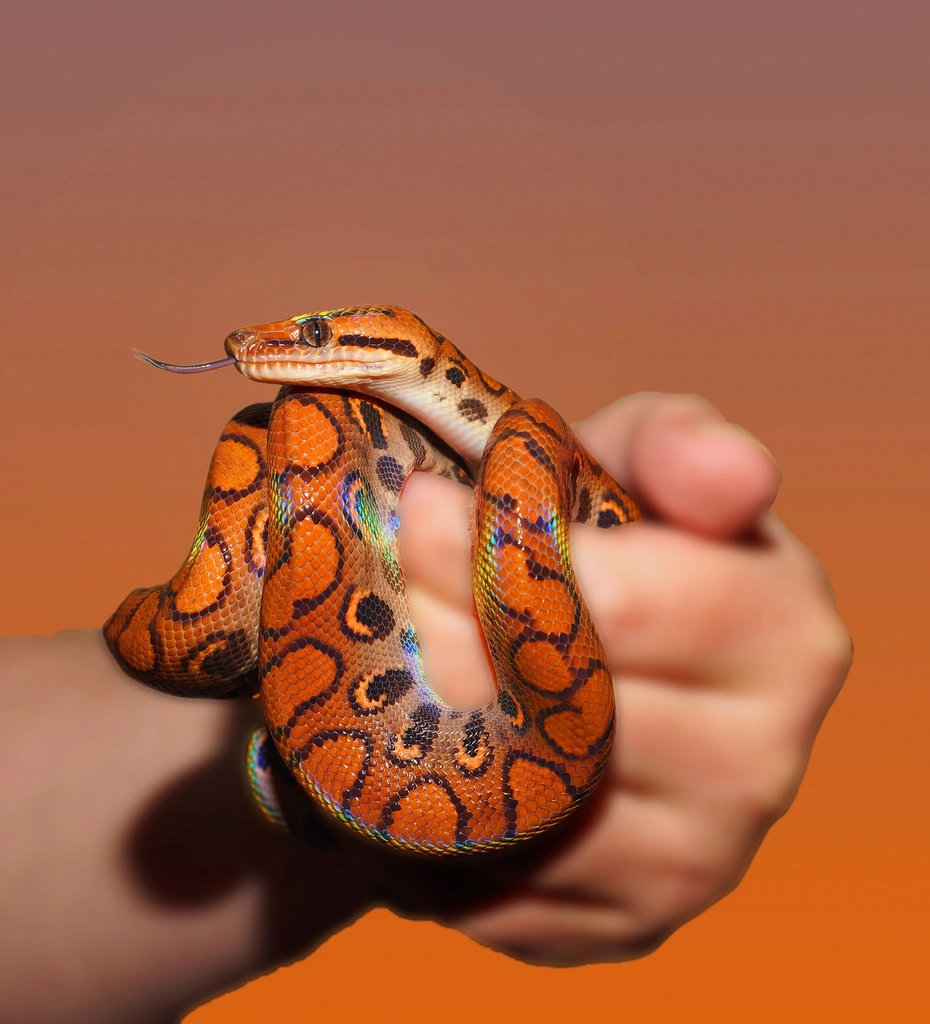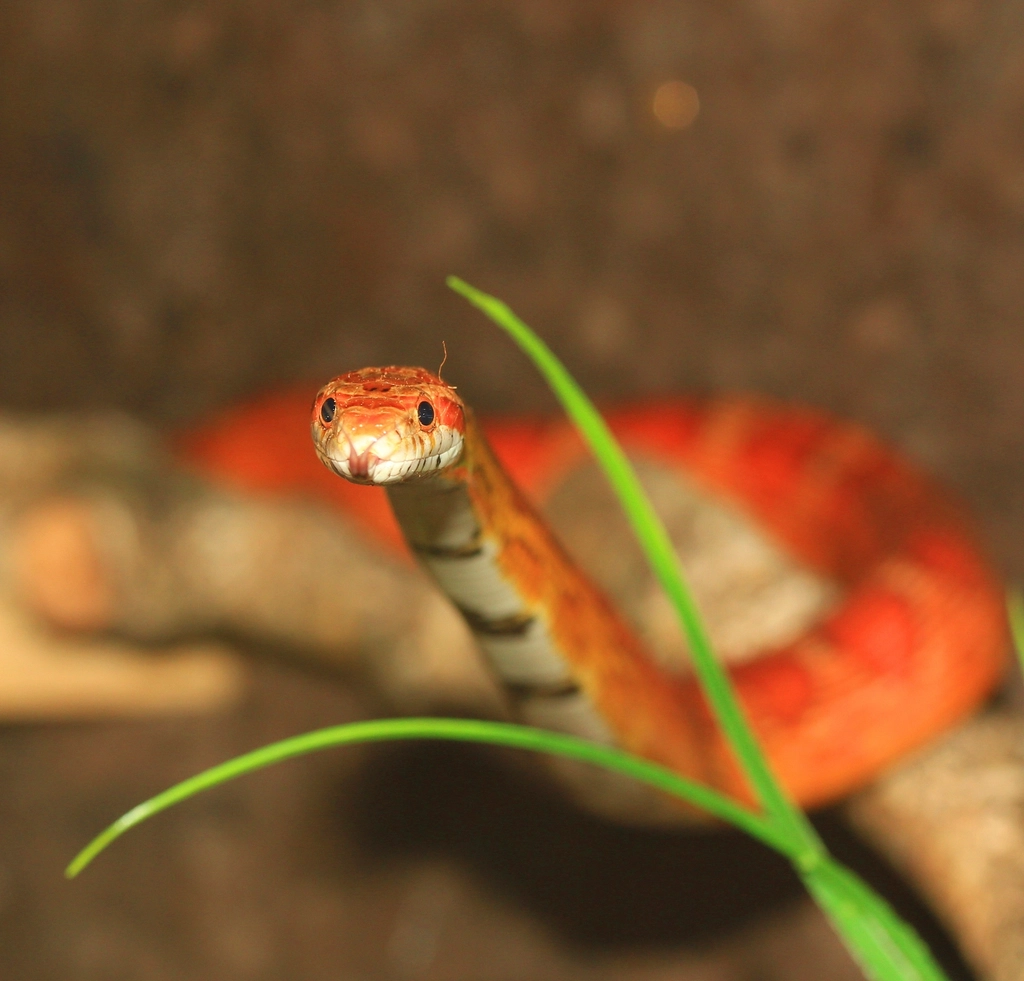Have you ever stumbled upon a creature so vibrant and mesmerizing that it left you in awe? The United States is home to some of the most colorful snakes on the planet, each one more fascinating than the last. These serpents are not only a feast for the eyes but also play a crucial role in their ecosystems. Let’s dive into the world of these dazzling reptiles and explore what makes each one uniquely captivating. Prepare to be surprised, inspired, and maybe even a little bit enchanted by these magnificent creatures.
Eastern Coral Snake

The Eastern Coral Snake is a masterpiece of nature’s palette. With its striking bands of red, yellow, and black, this snake is both beautiful and dangerous. Found primarily in the southeastern United States, it is often confused with its non-venomous lookalikes, the milk snake and the scarlet kingsnake. The rhyme “Red on yellow, kill a fellow; red on black, friend of Jack” is a handy way to remember which is which. Despite its venomous nature, the Eastern Coral Snake is shy and prefers to avoid confrontation. Its vibrant colors act as a warning to predators, a brilliant example of nature’s way of saying “stay away.”
Scarlet Kingsnake

The Scarlet Kingsnake is a non-venomous mimic of the Eastern Coral Snake, sharing similar bands of red, black, and yellow. However, its colors are arranged differently, with red bands touching black bands. This mimicry is a survival tactic, deterring potential predators by resembling its venomous counterpart. Found in the southeastern regions of the U.S., the Scarlet Kingsnake is a nocturnal creature, often seen during warm, humid nights. Its diet consists mainly of lizards, rodents, and other small snakes, making it an important player in controlling pest populations.
Milk Snake

Milk Snakes are masters of disguise, often mistaken for coral snakes due to their similar coloration. These snakes are harmless and are known for their beautiful bands of red, black, and white or yellow. Milk Snakes are found throughout the United States, thriving in a variety of habitats including forests, fields, and rocky hillsides. They are primarily nocturnal and have a diverse diet, feeding on small mammals, birds, and even other snakes. Their adaptability and striking appearance make them a favorite among reptile enthusiasts.
California Kingsnake

The California Kingsnake is a stunning creature with a bold pattern of black and white or yellow bands. Found in the western United States, this snake is highly adaptable, inhabiting deserts, forests, and grasslands alike. Known for its docile nature, the California Kingsnake is a popular choice among snake keepers. It is also renowned for its ability to prey on other snakes, including venomous ones, thanks to its immunity to their venom. This snake’s vibrant appearance and intriguing behavior make it a fascinating subject of study.
Western Ribbon Snake

The Western Ribbon Snake is a slender, graceful serpent adorned with vivid stripes of yellow, red, or orange along its length. Found near water sources such as streams and ponds in the central United States, this snake is an agile swimmer and an adept hunter. Its diet primarily consists of amphibians and small fish. Despite its bright colors, the Western Ribbon Snake is non-venomous and poses no threat to humans. Its striking appearance and lively nature make it a delightful sight in its natural habitat.
Green Tree Python

Though not native to the U.S., the Green Tree Python is a popular exotic pet known for its vibrant green hue. It is often found in captivity across the country. This snake, originally from New Guinea and Australia, is a striking example of nature’s artistry. Juveniles are typically yellow or red and change to their characteristic green as they mature. The Green Tree Python spends most of its life in trees, using its prehensile tail to grasp branches. Its stunning coloration and unique arboreal lifestyle captivate reptile enthusiasts worldwide.
Eastern Indigo Snake

The Eastern Indigo Snake is the longest native snake in the United States, and its deep blue-black scales shimmer with an iridescent sheen. Found in the southeastern U.S., this non-venomous snake is a powerful predator, feeding on a variety of prey, including other snakes. Despite its imposing size, the Eastern Indigo Snake is known for its gentle disposition, rarely exhibiting aggression. Its conservation status is of concern due to habitat loss, making it a symbol of the importance of preserving natural environments.
Ringneck Snake

The Ringneck Snake is a small, enchanting serpent with a distinctive band of bright color, usually orange or yellow, around its neck. Found throughout the United States, this snake is often encountered in gardens and wooded areas. Its belly is often a vivid red or orange, adding to its charm. Ringneck Snakes are secretive and nocturnal, feeding on small invertebrates and amphibians. Their gentle nature and striking appearance make them a favorite among amateur herpetologists and casual observers alike.
Garter Snake

Garter Snakes are among the most widespread snakes in North America, easily recognized by their longitudinal stripes in various colors. These adaptable snakes inhabit a range of environments, from forests to fields to urban areas. Garter Snakes are non-venomous and play an essential role in controlling insect and rodent populations. Their varied diet includes earthworms, amphibians, and small mammals. Despite their ubiquity, Garter Snakes remain a fascinating subject for those interested in the diversity of reptile life.
Red Corn Snake

The Red Corn Snake, also known as the Pantherophis guttatus, is a popular pet due to its docile nature and striking appearance. Its coloration ranges from bright red to orange with black-bordered blotches, resembling a pattern of Indian corn. Native to the southeastern U.S., these snakes are skilled climbers and are often found in trees and abandoned buildings. Red Corn Snakes primarily feed on rodents, making them beneficial for pest control. Their beauty and gentle temperament make them a beloved choice among snake enthusiasts.
Glossy Snake

The Glossy Snake, with its smooth, shiny scales, is a subtle beauty found in the southwestern United States. Its coloration varies from light brown to gray, often with darker blotches along its back. This snake is primarily nocturnal and prefers arid environments such as deserts and scrublands. Glossy Snakes feed on small mammals and reptiles, playing a vital role in maintaining ecological balance. Their elusive nature and understated elegance make them a fascinating subject for those interested in the quieter aspects of reptile life.
Corn Snake

Corn Snakes are a favorite among reptile enthusiasts for their striking patterns and calm demeanor. Found throughout the southeastern and central United States, these snakes exhibit a range of colors from orange to brown, with distinctive black-bordered blotches. Corn Snakes are adept at climbing and are often found in trees and abandoned buildings. Their diet consists mainly of rodents, making them valuable for controlling pest populations. The combination of their beauty, ease of care, and beneficial role in the ecosystem makes Corn Snakes a popular choice for both novice and experienced snake keepers.
Conclusion

The world of colorful snakes in the United States is as diverse as it is fascinating. Each species brings its unique charm and role within its ecosystem, reminding us of the intricate beauty of nature. From the vibrant Eastern Coral Snake to the subtle elegance of the Glossy Snake, these serpents captivate our imaginations and inspire a deeper appreciation for the natural world. What surprises await you in your backyard?
- 12 Fascinating Shark Facts And 3 That Are Totally Wrong - August 21, 2025
- 11 Animals That Can Clone Themselves - August 21, 2025
- 15 Cat Breeds Vets Secretly Wish You’d Stop Buying - August 21, 2025

